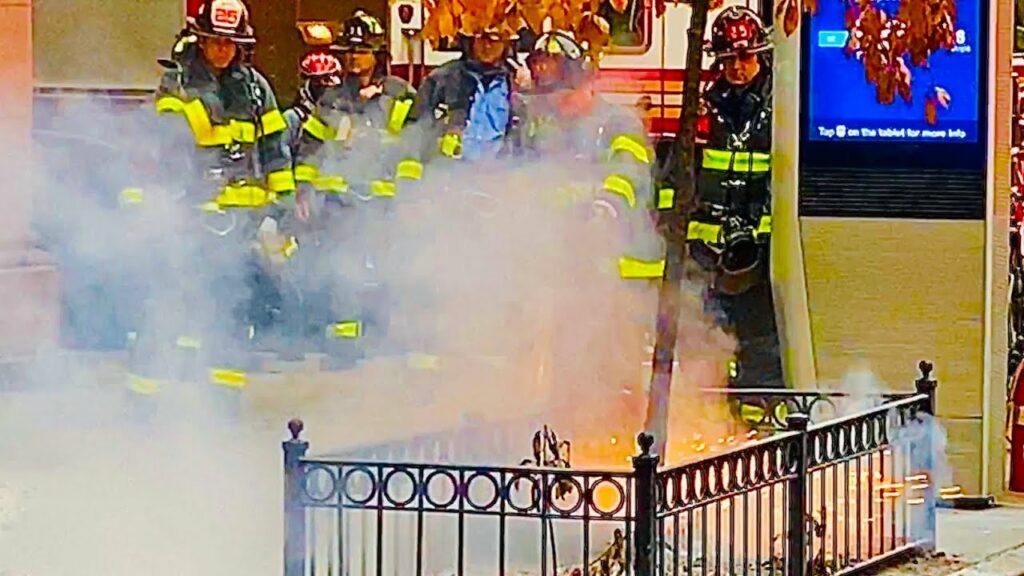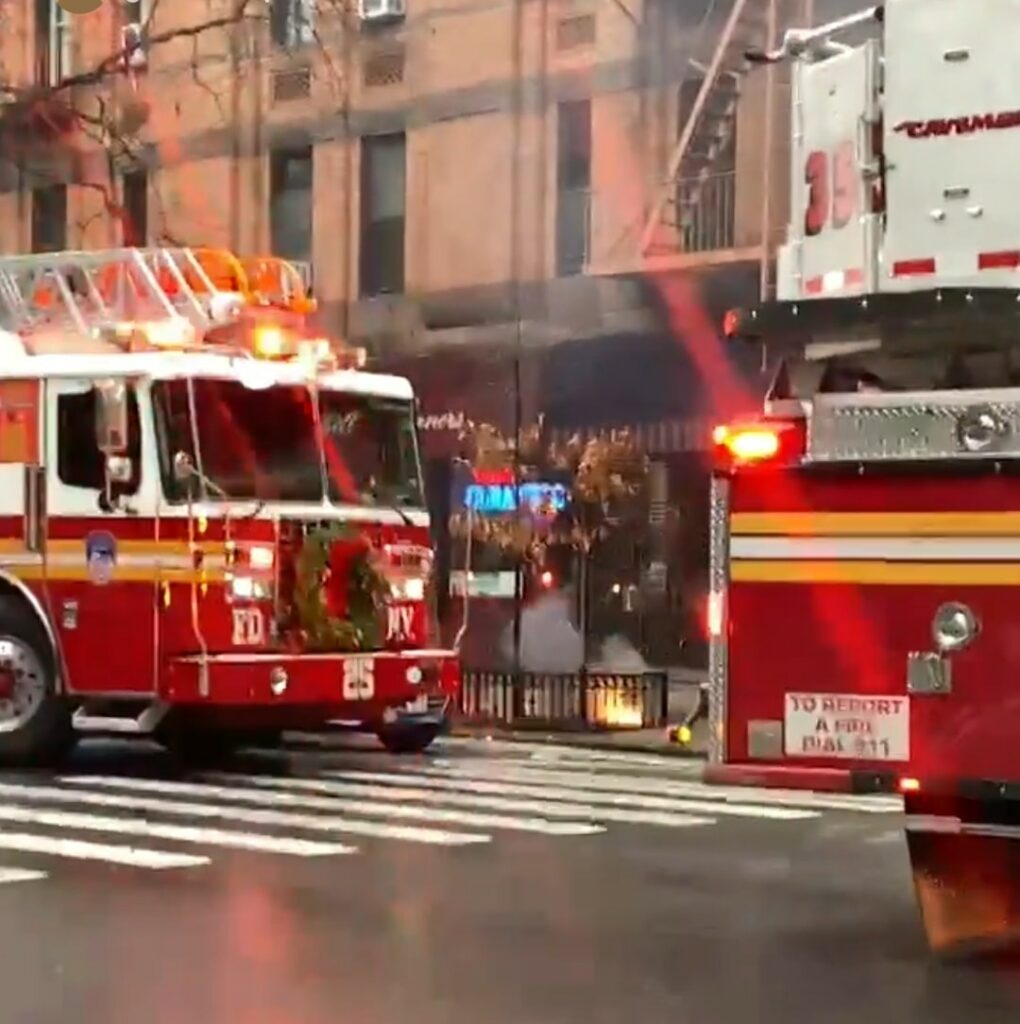Lithium Ion Battery Fires

Over the past year, the FDNY responded to over 100 documented fires that were related to e-bikes & e-scooters. The origin of these fires is from the lithium-ion battery.
Most cases, these fires have started while the unit was being charged. After a lithium ion fire is extinguished, be aware that the batteries can re-ignite.
12/16/2021: 2 teens were forced to slide down the side of a high rise building when a Lithium-Ion battery set their apartment on fire.
Responding to an alarm involving Lithium Ion Batteries:
- Immediately request HazMat.
- Wear full PPE when near damaged or smoldering Lithium ion batteries.
- Popping or white smoke may be an indication of thermal runaway. Thermal runaway begins when the heat generated within a battery exceeds the amount of heat dissipated into their surrounds creating a domino effect within the battery until failure & fire. The white smoke from the battery is toxic & highly flammable. Follow standard sop from structural fires.
- When practical, remove the e-bike or e-scooter from the fire building via interior stairs – do not use the elevator.
- When possible, submerge the battery in a 5 gallon plastic bucket filled with water. Leave the cover off of the bucket so no gasses build up inside.
- Have a charged handline present to protect members from thermal runaway.
- The hazard increases when stored below grade or when multiple batteries or bikes are stored together.

01/02/2022: In front of 376 Amsterdam Ave on the Upper West Side of Manhattan, FDNY responded to a Lithium-Ion Battery burning on the sidewalk.
The following are some tips suggested by the Consumer Product Safety Commission:
- Buy from a reputable source. If the price seems significantly lower than the cost of other products, such as hoverboards, the unit may not be UL2272 complaint.
- Do not charge a device overnight or when you are unable to observe the device.
- Charge & store in an open, dry area, away from combustibles (meaning items that can catch fire).
- Do not charge directly after riding. Let the device cool for an hour before charging.
- If giving a hoverboard to someone for the holidays, leave it in it’s particularly charged state. Do not take it out of the package to bring it to a full charge & then wrap it back up. Often, the product comes partially charged. Leave it in that state until it is read to be used.
- Use only chargers supplied with the devices.
- Check for recalls. Go to the CPSC website here to see if your device has been recalled. Stop using a recalled device immediately.
- Have working smoke alarms & fire extinguishers on every level of your home, outside sleeping areas & inside each bedroom.
- Report incidents involving hoverboards overheating, smoking or catching fire to CPSC here.
Hoverboards should be complaint with the UL 2272 safety standard. However, even UL 2272 compliance can not guarantee that a hoverboard will not overheat or catch fire.
Find out about all alarms across NYC and Long Island on the minute with the NYC Fire Wire App.